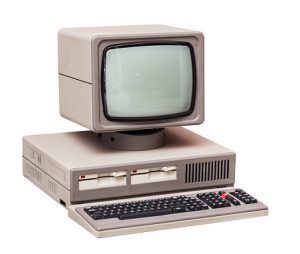

Breaking Barriers US Government Using Old Computers

 It’s not as simple as it sounds when it comes to replacing or even updating U.S. Government technology. What most people don’t realize is that this market is a flow down environment very much like a network connecting to sectors with encrypted limits to access. There was a time when the government set the scales for the next generation of technologies and trends, bringing new products from the lab to the market. Today, we see enormous communities of both small and large companies developing communications and virtualizations changing the physical boundaries of computers.
It’s not as simple as it sounds when it comes to replacing or even updating U.S. Government technology. What most people don’t realize is that this market is a flow down environment very much like a network connecting to sectors with encrypted limits to access. There was a time when the government set the scales for the next generation of technologies and trends, bringing new products from the lab to the market. Today, we see enormous communities of both small and large companies developing communications and virtualizations changing the physical boundaries of computers.
As the nation’s largest consumer, technology continues to compete for government business in support of new, affordable, and cost-effective computer systems. Acquisitions take place every day in all of the agencies of the government and like private networks they share data, each with a distinctive purpose of serving the government to protect the public. If you’ve ever worked on a government contract the goal is to integrate new developments within the existing systems using off-the-shelf components allowing old computers to assimilate new technology.
Breaking barriers starts with companies staging incremental improvements to the existing equipment, and enforcing heavy precautions to prevent disruptions. Technically, the government is in agreement and acknowledges the need to move from individual computers or solitary networks to full service data centers. The major barrier for most businesses looking to do business with the government is not being prepared for consequences in case of failure, breech, or defaults.
Security Levels
Equipment advancements today have opened doors to potential vulnerabilities to federal networks. Technology is only part of the answer to ensuring the nation’s computers are secured from cyber threats and inaccurate human interactions. Security risks pertaining to equipment, training for users, and ongoing program alerts need to work with the existing government policies. These policies guide and monitor all of the agencies using some level of security gauged by the significance of information to national and public security and access for equipment and users.
Integration
The philosophy in technology for the government is to modify and upgrade common items without interference to daily tasks, enhancing the agency’s function and purpose. To help this movement, management needs to identify the associated risks and casualty consequences with strategies to persevere and modernize these tasks without obstructing the effectiveness of the new equipment.
As more systems begin to navigate towards shared processing resources and data through common computers, integrating these systems becomes more complex, especially when computer capacity or capabilities are limited or not compatible to new process apps. In the private sector the built-in security features are safeguards, using this same feature for the government may be costly to customize.
Property Disposal
It’s no secret the government has acknowledged the repercussions of improvements and warrants the need for change using the current technological advances. At this very moment, when it comes to disposal, there are unwanted and outdated computers containing valuable information and vulnerable to confiscation. The method of destroying and final location for disposing computers, drives or storage, electronic devices and other equipment for the government and associated organizations is a serious sequence.
The concerns increase as personnel use work computers to copy and save images to computer screens or set aside a collection of disks that contain information from a computer being replaced. Even in today’s secured environment, computers or other devices falling into the wrong hands could prove disastrous for an agency looking to protect a nation’s secrets. Companies looking to work with the government need to be prepared to shred and destroy with legally responsible witnesses.